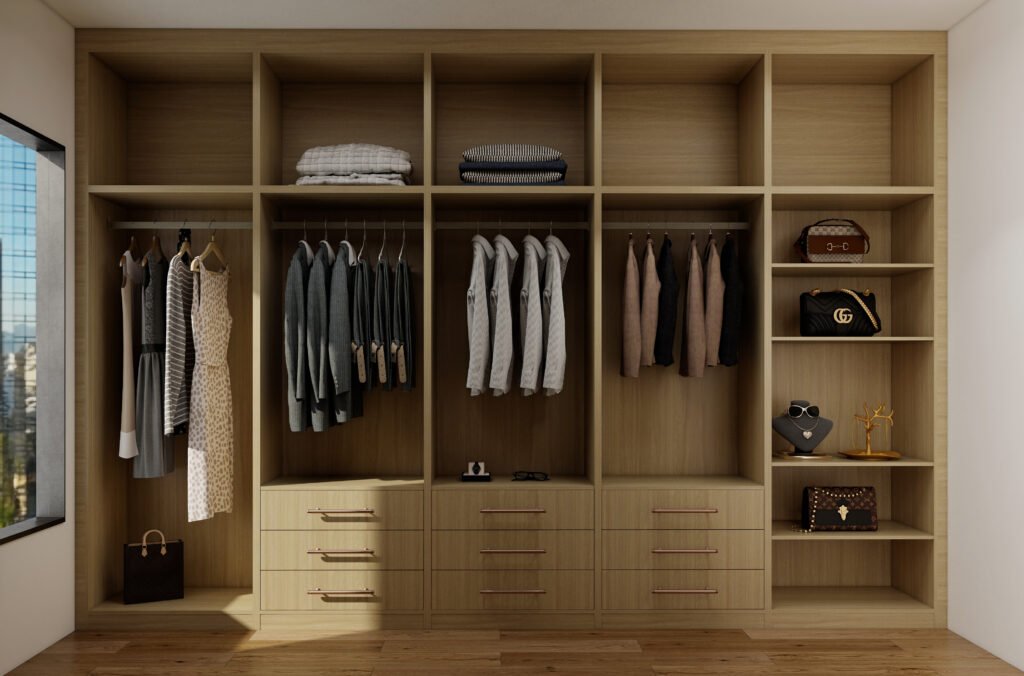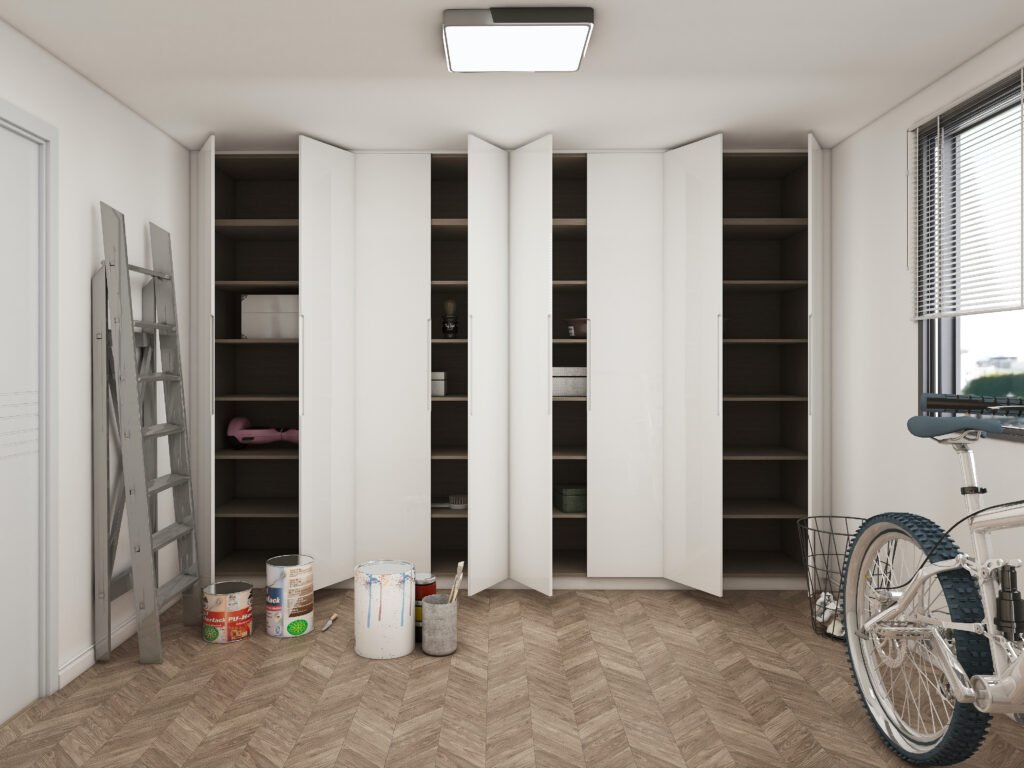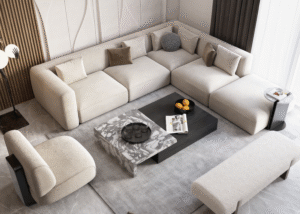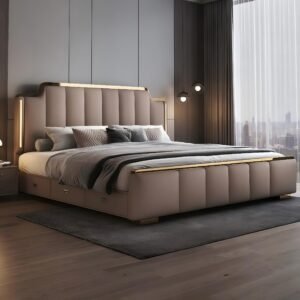Choosing the right furniture for your bedroom can significantly impact its functionality and aesthetics. Wardrobes and dressers are essential pieces of furniture for the bedroom, and they both provide unique storage solutions for your clothing and accessories. But how do you decide which piece of furniture is best for your needs? Today, Cs Home will discuss with you the differences between wardrobes and dressers, their advantages and disadvantages, and hope that after reading this blog, you can have a clearer understanding of your home needs.
What is a Wardrobe?
A wardrobe, also known as an armoire closet, is a tall, freestanding piece of furniture designed to store clothing. It usually consists of hanging space, shelves and drawers. Wardrobes are ideal for storing dresses, suits, coats, and other garments that need to be hung to prevent wrinkles. They often include additional storage for shoes, hats, and accessories.

Benefits of a Wardrobe:
- Ample Hanging Space: Wardrobes provide plenty of room for hanging clothes, making them ideal for items that need to stay wrinkle-free.
- Versatile Storage Options: Many wardrobes come with adjustable shelves and drawers, offering flexibility in how you organize your clothes and accessories.
- Space-Saving: As a tall piece of furniture, wardrobes make efficient use of vertical space, which is particularly beneficial in smaller bedrooms.
- Aesthetic Appeal: Available in various styles and finishes, wardrobes can complement the overall decor of your bedroom.
Drawbacks of a Wardrobe:
- Large Footprint: Wardrobes can take up significant floor space, which may not be ideal for smaller rooms.
- Assembly Required: Some wardrobes require assembly, which can be time-consuming and may require additional tools.
What is a Dresser?
A dresser, also known as a chest of drawers, is a horizontal piece of furniture that features multiple drawers stacked vertically. Dressers are designed for storing folded clothing, such as t-shirts, sweaters, underwear, and socks. They often include a wide top surface that can be used for additional storage or display purposes.

Benefits of a Dresser:
- Compact Design: Dressers have a smaller footprint compared to wardrobes, making them suitable for rooms with limited space.
- Easy Access: With all clothing stored in drawers, it’s easy to find and access items quickly.
- Multi-Functional: The top surface of a dresser can be used to display decorative items, place a mirror, or even serve as a makeshift vanity.
- Variety of Styles: Dressers come in a wide range of designs, from modern to traditional, allowing you to match them with your existing decor.
Drawbacks of a Dresser:
- Limited Hanging Space: Dressers do not provide space for hanging clothes, which may be a drawback if you have many items that need to be hung.
- Organizational Challenges: Keeping drawers organized can be challenging, especially if you have a large number of small items.
Comparing Wardrobes and Dressers
To help you decide which piece of furniture is right for you, let’s compare wardrobes and dressers based on several factors:
1. Storage Needs:
- Wardrobes: Ideal for hanging clothes, longer garments, and items that need to stay wrinkle-free. They often include shelves and drawers for additional storage.
- Dressers: Perfect for folded clothes, smaller items, and those that do not require hanging. Drawers provide easy access and organization for a variety of items.
2. Space Considerations:
- Wardrobes: Typically taller and may take up more vertical space, but they make efficient use of this space with their versatile storage options.
- Dressers: Have a smaller footprint and can fit into tighter spaces, making them suitable for smaller bedrooms or shared spaces.
3. Aesthetic Appeal:
- Wardrobes: Available in various styles and finishes, wardrobes can serve as a statement piece in your bedroom, adding to the overall decor.
- Dressers: Also available in numerous designs, dressers can complement your existing furniture and provide additional surface space for decorative items.
4. Functionality:
- Wardrobes: Offer a combination of hanging, shelving, and drawer space, making them versatile and suitable for a wide range of clothing storage needs.
- Dressers: Focus on drawer storage, making them ideal for items that can be folded and easily accessed.
How to Choose the Right Piece for Your Bedroom
When deciding between a wardrobe and a dresser, consider the following factors:
1. Clothing Collection:
Assess the types of clothing you own. If you have many items that need to be hung, such as dresses, suits, and coats, a wardrobe may be the better choice. If most of your clothing can be folded, a dresser might be more suitable.
2. Space Availability:
Measure the dimensions of your bedroom, such as length, width, and height, to determine how much space you have for furniture. Consider the height and width of the available space to decide if a wardrobe or dresser would be more appropriate.
3. Storage Needs:
Think about your storage needs beyond clothing. Do you need extra space for shoes, accessories, or other items? Wardrobes often come with additional storage options, while dressers provide a top surface for display and storage.
3. Room Layout:
Consider the layout of your room and how each piece of furniture would fit into the space. A wardrobe’s vertical design might work well in a room with high ceilings, while a dresser’s horizontal layout could be more suitable for rooms with lower ceilings or sloped walls.
4. Aesthetic Preferences:
Choose a piece that matches your bedroom’s decor and your personal style. Both wardrobes and dressers come in various designs, so you can find one that complements your existing furniture.
Conclusion
Both wardrobes and dressers offer unique storage solutions for your bedroom, each with its own set of benefits and drawbacks. Wardrobes are ideal for hanging clothes and providing versatile storage options, while dressers are compact and perfect for folded items. When deciding which one to choose, consider your clothing collection, space availability, storage needs, room layout, and aesthetic preferences.
By carefully evaluating these factors, you can select the right piece of furniture that enhances the functionality and style of your bedroom. Whether you opt for a wardrobe, a dresser, or even a combination of both, you’ll create a well-organized and visually appealing space that meets your storage needs.
FAQs
Q1. What is the main difference between a vanity and a regular cabinet?
A1:
A vanity typically includes a sink and storage space, mainly used in bathrooms; a regular cabinet is used in various rooms for storing items and does not include a sink.
Q2. What types of vanities are there?
A2:
Common types include single vanities, double vanities, and floating vanities.
Q3. What is the function of a medicine cabinet?
A3:
A medicine cabinet is used to store medications and first-aid supplies, often featuring a mirror.
Q4. What are the advantages of a corner cabinet?
A4:
Corner cabinets efficiently utilize bathroom corner space, making them suitable for small bathrooms.
Q5. What should be considered when choosing a bathroom cabinet?
A5:
Consider space, storage needs, style, material durability, and budget.




